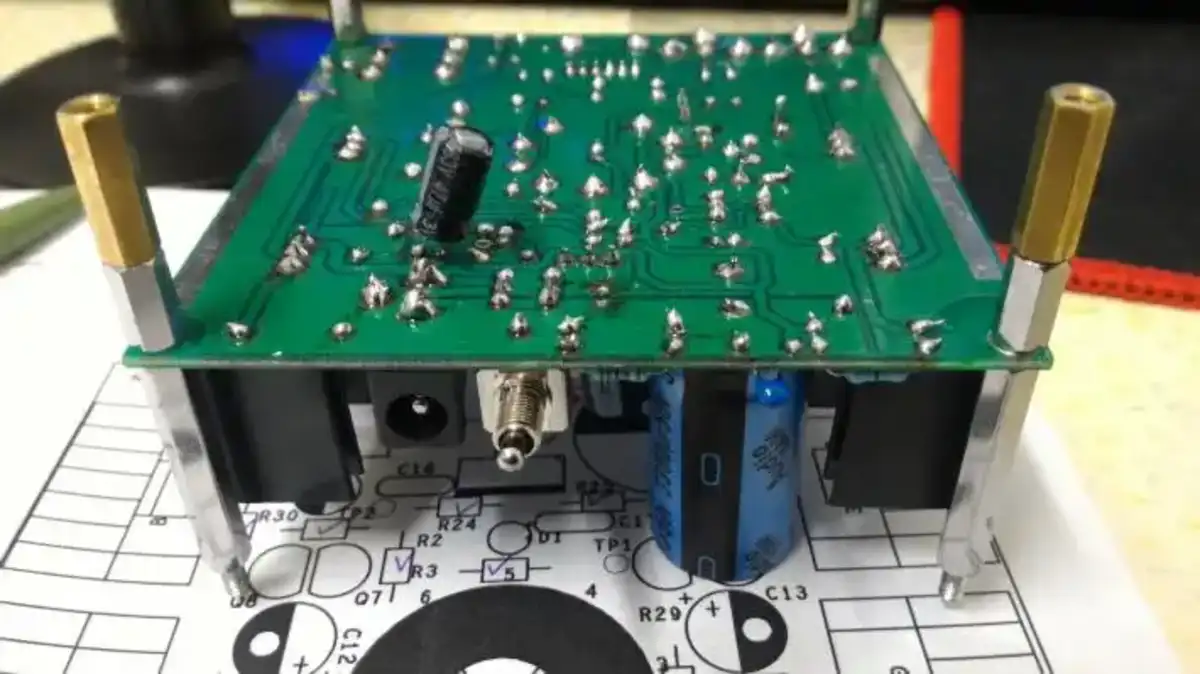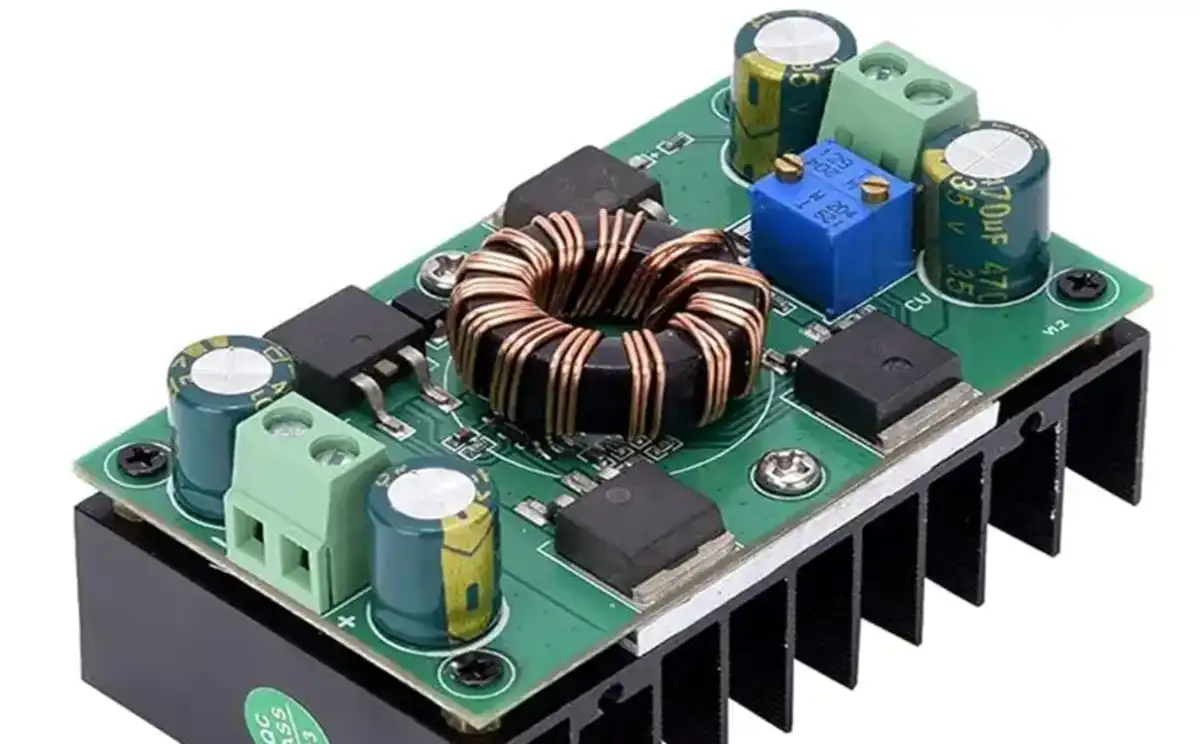Global high-mix volume high-speed Shenzhen PCBA manufacturer

Ru
9:00 -18:00, Mon. - Fri. (GMT+8)
9:00 -12:00, Sat. (GMT+8)
(Except Chinese public holidays)





Global high-mix volume high-speed Shenzhen PCBA manufacturer

Ru
9:00 -18:00, Mon. - Fri. (GMT+8)
9:00 -12:00, Sat. (GMT+8)
(Except Chinese public holidays)





HomePage > Blog > Knowledge Base > What is a Backplane PCB?
In modern electronic equipment, effective circuit connection is the key to ensuring the proper operation of the product. The backplane PCB plays a vital role in various circuit connections, including in complex circuit systems such as servers and computers.
So, what exactly is a backplane PCB, and why is it so important? Read this article to get a full understanding of backplane PCBs, including their structure, components, applications, and at the same time, comparing the difference between backplane PCBs and motherboards.

A backplane PCB is a large printed circuit board that connects multiple sub-boards. As a connection platform, it plays the role of a " central hub " in electronic equipment, connecting multiple circuit boards such as processors and storage boards through slots or interfaces, so as to achieve data and signal transmission between the circuit boards. It is commonly used in high-performance environments, particularly in applications that require high-speed data transmission, such as servers and network devices.
The backplane PCB itself does not carry the main function chips or complex components, only the necessary electrical connection lines and slot layout. So, it does not perform any computing or logical control functions. Instead, it only provides physical connections for signal transmission, power distribution and so on.
The backplane PCB is usually composed of multiple layers, ranging from 4 to 16 layers, including the signal layer, ground layer and power layer. The multi-layer design of the backplane can achieve high-density wiring, effectively reduce electromagnetic interference, ensure the smooth operation of high-speed data transmission and power distribution, safeguarding signal integrity.
The key components of a backplane PCB include all the elements that support the physical and electrical connection between various sub-boards or modules, including signal layers, ground layers, power layers, connectors and slots, vias, heat management components, traces, shielding, mechanical components, test points, and decoupling capacitors. These components work together to ensure the efficient operation, reliability, and performance of complex systems.
Common connectors for backplane PCBs include are various, including PCIe, SATA, VME, SFF, DIN 41612, QSFP, RJ45 Ethernet, FPC/FFC, Molex, MicroTCA and so on.
These connectors play a crucial role in backplane PCBs by enabling physical and electrical connections between sub-boards or modules. They support various data transfer rates and power distribution requirements, and are widely used in computer systems, servers, telecommunications equipment, industrial machinery, and consumer electronics. Choosing the appropriate connector based on specific application needs ensures the stability, reliability, and efficiency of the system.
According to different device connection needs, backplane PCB is designed in a variety of types. Depending on whether the backplane PCB contains active electronic components, such as power management modules, signal amplifiers or other control circuits, it can be divided into passive backplanes and active backplanes.
Passive Backplane
The passive backplane does not contain any active electronics that perform signal processing or power management functions, only the circuitry used to physically connect and transmit signals. It is usually composed of the signal layer, ground layer and power layer and so on. Through connectors and slots, it connects the sub-board to the main system, its power management and signal processing need to rely on the sub-board or external system.
Accordingly, because the passive backplane itself does not contain complex electronic components, the design and manufacturing cost is lower than the active backplane, and the power consumption is also lower.
It is widely used in systems that do not require complex signal processing and is suitable for basic connections, data transmission and simple power distribution.
Active Backplane
The active backplane installs active electronic components compared with traditional passive backplanes. It not only provides a physical connection, but also can perform certain electronic functions, such as the processing of electrical signals, amplification, regulation or management of power, and can perform intelligent processing and optimization of signals and power supplies.
Compared with passive backplanes, active backplanes are more complex to manufacture and consume relatively higher power. It is often used for complex signal processing, high-speed data transmission, intelligent power management and other occasions, such as advanced servers, data centers, high-end communication equipment, industrial automation control systems and so on.
In addition to these, there are also specialized types such as server backplane, which are designed specifically for servers, and switch backplane, which is used in networking equipment like switches and routers.

When designing a backplane PCB, a number of factors must be considered, which not only directly affect the performance of the system, but also the overall operation of the electronic device. When designing a backplane, designers need to consider the following aspects:
Signal Integrity:
Signal integrity is one of the most important considerations when designing a backplane PCB. When designing it, the designer should reasonably plan the signal path, select the appropriate wiring layer, materials, and technology, so as to improve the data transmission efficiency and ensure that the signal quality is not interfered with.
Power Distribution:
The power distribution system of the backplane PCB needs to provide power to multiple sub-boards stably and efficiently. Designers need to choose the right layout of the power layer, arrange the power supply and ground rationally, use a large area of ground to reduce voltage drop, and design a suitable power decoupling and filtering circuit to ensure stable operation of the system.
Thermal Management:
High-performance backplane PCBs generate a lot of heat during operation, and effective thermal management is critical to prevent overheating, which can lead to component failure. Therefore, when designing a backplane PCB, the designer should consider a reasonable heat dissipation method for the backplane.
Connector Selection:
The choice of backplane connector is also very important, because it not only affects the speed of data transmission, but also affects the stability and overall reliability of the system. Designers should choose the right connector type according to the needs of the application, not only to meet the requirements of high data transmission rates, but also to have high mechanical strength and durability to withstand long-term physical connection and disconnection operations.
In electronic devices, the backplane and the motherboard have similarities in function, so many people outside the electronics industry always confuse the two terms.
The motherboard is the core circuit board of a computer or other electronic device, responsible for connecting and coordinating all other components such as the central processing unit (CPU), graphics card, storage device, and so on. It provides the physical and electrical connections that ensure the individual hardware components work together properly.
The backplane and the motherboard are two different connectivity platforms in electronic devices, each of which performs different functions in systems such as computers and servers. While they are similar in some respects, like providing connectivity and signal transmission functions, they differ significantly in structure, use, and function.
Differences Between Backplane and Motherboard
|
Feature |
Backplane |
Motherboard |
|
Primary Use |
Used to connect multiple modules or devices, commonly in servers, storage devices, etc. |
Used to connect and manage all core components in a computer or other device, such as the CPU, memory, hard drives, etc. |
|
Structure |
Composed of multiple slots and connectors, allowing multiple modules to connect via the slots. |
Typically contains integrated circuits, memory slots, graphics card slots, storage interfaces, etc., serving as the core control board of the device. |
|
Scalability |
Supports modular design, capable of housing multiple pluggable modules. |
Motherboards typically support limited expansion, relying on slots and interfaces (e.g., PCIe) to add functionality. |
|
Power Management |
Distributes power to the connected modules. |
Manages the entire device’s power supply and distributes power to individual components. |
|
Application Areas |
Mainly used in servers, storage devices, networking equipment, etc., offering high scalability and manageability. |
Widely used in personal computers, laptops, desktops, workstations, etc., serving as the core component of the computer. |
Backplane PCBs are an important component in modern electronic devices, providing the necessary connectivity for complex systems. From servers to communications equipment, the versatility and reliability of backplane PCBs make them indispensable in high-performance environments. By understanding the fundamentals of backplane design and function, engineers and enthusiasts alike can harness their power to unlock new frontiers of innovation and connectivity in electronics.

Assembly Enquiry
Instant Quote